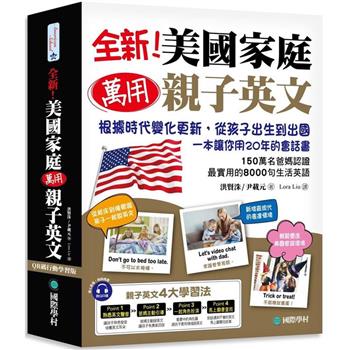INTRODUCTION
The role of media in any society is vital and is closely related to brands and consumption especially in a vibrant 21st century Asian city. Hong Kong with its free-market economy and urban bustle is a perfect place to observe this in action. But Hong Kong is also deeply conservative in many ways especially with regard to family values, and the presence of overtly sexualized images in advertising sits uncomfortably with the values of modesty and traditional sexual mores that exist there. Young girls are also discovering their identities like any other groups of girls in the world, and often this journey will not be easy.
This book deals with media and the extent to which media representations influence girls in Hong Kong and how they are affected by this ubiquitous presence. Through the quantitative and qualitative studies, readers could examine and understand how tween girls and teen girls in Hong Kong interact with the media and how they interpret the messages from the media.
The observations found in the studies are also valuable to parents, educators, and communication scholars to better understand the influence of media on the value orientations of girls; and we hope that responsible marketers and educators can use these research findings to communicate with girls in ways which can improve their well-being.
作者簡介:
THE AUTHOR
Kara CHAN is Professor of Communication Studies at the Hong Kong Baptist University. Her research specializations include mass communication, advertising, and consumer behavior in Hong Kong and China.
She is the co-author of Advertising to Children in China (Chinese University Press,2004)and edited Advertising and Hong Kong Society (Chinese University,2006). She also co-edited New Vision in Advertising and Public Relations (City University of Hong Kong Press, 2006) and Advertising and Chinese Society: Impacts and Issues (Copenhagen Business Press, 2009). Her journal articles had won four Emerald Literati Network Awards for Excellence.
She is married with one child and, when not pondering advertising and its implications, she is an enthusiastic amateur kayaker.
作者序
PREFACE
Chinese society has been for centuries a male-dominated society. Girls and women are expected to carry out their domestic roles dutifully. When a female is young, she is subject to the authority of her father. When she gets married, she is expected to listen to her husband. When her husband dies or when she reaches her senior years, she needs to yield to the will of her eldest son. Not getting married indicates that she is not good enough for anybody. Not producing a male offspring means that she is a failure. The extended family will take action to find another female to replace her.
But the world is changing. Chinese girls in Hong Kong luckily have an opportunity to grow up in a former British colony. Under British governance, legislation that protects the rights of girls and women was established and implemented. Girls are able to receive education and enjoy more or less the same rights as boys. An ordinance was passed in 1981 to enable female civil servants to receive the same salary as their male counterparts. With the introduction of full-time domestic helpers from overseas, Hong Kong women had the option of pursuing their career goals. The female labor participation rate in Hong Kong had reached 53% in 2011 (Census and Statistics Department, 2012). There were 284,901 domestic helpers working in Hong Kong in 2010 (Wan, 2010). Assuming each domestic helper is working with one family, a rough estimation indicates that about one in every eight households has the choice of allowing the female householder (very likely a wife or a mother) to stay in the workforce.
Marketers fully understand the power of female consumers. Cosmetics and skin care is the number two advertising product category in Hong Kong (admanGo, 2012). Females also make purchase decisions for the households. As a result, females are the target audience of the product categories that they consume as well as the product categories that they purchase for their families. Research studies indicate that most of the advertisements aimed at the female target group employ female images that are classical (Chan and Cheng, 2012), using female models that are usually mature in age, gentle, elegant, and sophisticated in taste. Female images using a classical beauty type tell girls and women what to wear, what to eat, where to go shopping or have fun, when to use the product, and how to win the hearts of the opposite sex. The marketers are eager to play a part in the girls’ process of constructing their own gender identities.
Hong Kong has a media-saturated environment. Televised messages can be found at home, in public transportation, inside lifts and lift lobbies, and around shopping malls. A rich diversity of print-based media outlets such as newspapers and magazines can be found in Hong Kong. Printed advertisements are commonplace, from roadside billboards to single sheets in train stations and from inside train carriages to the sides of double-deck buses. In addition, the Internet provides a wealth of sources and image-driven content.
Images of females in advertising are abundant. On an average day walking across a subway station, you will come across dozens of posters featuring beautiful, sexy, and most often non-Chinese female images. They are the dominant players in constructing what facial and body beauty is about among the target audience. These advertisements tell females that they need to have a pretty face, v-shape face contour, white and spotless skin, full breast, narrow waist, and a slim body. Many advertisers believe that sex sells. Sexy advertisements of watches, jewelry, cars, or electrical appliances dominate the media scene. Newspapers and magazines often feature “female models of the day” that are young and seductive.
The female images and the sexuality displaced are in sharp contrast with the values endorsed by parents, schools, and educators. Some primary and secondary schools in Hong Kong place strict rules about courtship and intimate relationship during childhood and adolescence. Parents often encourage daughters to refrain from sexual activities until adulthood. Chinese families are in general conservative about sex. Sexuality of girls is considered as dangerous and undesirable.
Facing with the discrepancy between what is told by parents and teachers, and what is seen in the media, how do girls respond? How do they establish their own gender roles and identities among the confusing and conflicting messages? How do pre-adolescent girls and adolescent girls respond to the tremendous amount of messages that tell them how they should be, what they should do, who they should idolize and how they can limit their aspirations? Content analysis of advertisements in Hong Kong shows that advertising is filled with gender-based stereotypes and role definitions that may not encourage the development of the woman or girl according to her potential (Moon and Chan, 2002). Gender stereotyped images of females are prevalent in the mainstream media (Fung and Yao, 2012). Research literature indicates that the gender representation in the media has an effect on the individual’s sense of self and behavior.
Throughout the book, we put the emphasis on tweens and adolescent girls. Tween girls are defined as 8–12 years olds who are not quite teens but have different interests than younger children. Adolescent girls in this book refer to the youth population aged 13 to 19.
This book aims to explore how tween girls and teen girls in Hong Kong learn, interpret and evaluate gender roles and sexuality from media images and celebrities. Specifically, we ask the following questions: What type of female images do they pay attention to? What kind of female images that they like or dislike? Who are their role models? What do they learn from the media images about appropriate or inappropriate female gender roles and female gender identities? How do younger girls differ from older girls in the interpretation of female images in the media?
From the studies we conducted and reported in the book, we observed that tween girls and teen girls demonstrate different levels of attention toward physical appearance, media celebrities, sexuality, media literacy and health messages delivered in media content. These observations are valuable to parents, educators, and communication scholars to better understand the influence of media on the value orientations of girls and to promote the well-being of girls.
About this Book
The book is based on three qualitative studies and one quantitative study we conducted since 2009. We adopted an innovative methodology of asking interviewees to take photos of female images from the media they consume every day and discuss their interpretation of these images.
Chapters 1 to 4 examine tween girls’ perception and interpretation of gender roles and gender identities from media images (Chapter 1), perception of and attitudes toward sexuality (Chapter 2), social learning of gender roles from celebrities (Chapter 3), and evaluation of and satisfaction with female images in media (Chapter 4). These chapters are based on a qualitative study conducted in 2009. Seeing the fruitful results, we extend our line of research to cover adolescent girls. A study of adolescent girls was conducted in 2010. Chapters 5 to 7 investigate how adolescent girls learn about gender roles from media images (Chapter 5), how they interpret sexuality found in media images (Chapter 6), and how they learn about gender roles from celebrities (Chapter 7). Famous persons, including media celebrities, are an important factor in self-concept development during adolescence. Understanding and evaluation of advertisements using celebrity endorsement among adolescent girls is therefore an important issue and is explored in Chapter 8.
As qualitative studies often have the limitation of small sample size and lack of representativeness, we conducted a quantitative survey of adolescent girls. Statements about perception of female gender roles generated from the qualitative studies reported in Chapters 1 to 8 are examined in a quantitative sample survey among adolescent girls.
Chapter 9 reports the results of the sample survey. We focus on the psychographic segmentation of adolescent girls according to their gender role perceptions. The last chapter concludes the research results and discusses how the results can be used by advertisers, marketers, parents, educators and public policy makers. We propose a theoretical model on the interplay of girls and female images for future study.
The idea for the study was conceived in a coffee shop next to Copenhagen Business School in 2007, where Professor Birgitte Tufte shared with me her passion in researching the tween market segment. I learned the idea of keeping a visual journal from my former colleague Dr. Russell B. Williams. We pooled ideas and came up with the innovative design of this project. It was intended to be a cross-cultural study of tween girls in Denmark, Hong Kong, and Italy. Our research journey did not have a smooth sailing. Professor Tufte was sick and the laptop computer of Gianna Cappello with the data was stolen. Only data collected in Hong Kong got published.
Different research methodologies have been adopted, including autovideography approach and qualitative interviews (Chapters 1 to 7), focus group study (Chapter 8), and sample survey (Chapter 9). These studies were supported by a faculty research grant from the Hong Kong Baptist University (project no. FRG2/0910/059) as well as research funding from the Centre of Mass Communication Research of the School of Communication, Hong Kong Baptist University. Some of the empirical findings have previously been published in peer-reviewed journals such as Journal of Intercultural Communication Studies, Journal of Children and Media, Journal of Consumer Marketing, Journalism and Mass Communication, and Young Consumers: Insight and Ideas for Responsible Marketers. We are grateful for the permission from the publishers to update and rewrite them into book chapters. Co-authors of these journal articles include Birgitte Tufte, Gianna Cappello, Russell B. Williams, Edwin Luk. Mr. Yu Leung Ng and Ms. Anqi Huang, our research assistants, helped tremendously in the preparation of the book manuscripts. We would like to thank our interviewees for their participation in the study. They have honored us by trusting us and sharing their views with us. We are also in debt to Professor T. Wing Lo, Edmund Chan, and Chris Chan of City University of Hong Kong Press for their continued support.
This book aims at benefiting advertisers, marketers, parents, educators, non-government organizations, and public policy makers as they attempt to understand how adolescent girls interact with media contents and how girls intercept what they see in the media. We hope that responsible marketers and educators can use these research findings to communicate with girls in such a way as to improve their well-being.
PREFACE
Chinese society has been for centuries a male-dominated society. Girls and women are expected to carry out their domestic roles dutifully. When a female is young, she is subject to the authority of her father. When she gets married, she is expected to listen to her husband. When her husband dies or when she reaches her senior years, she needs to yield to the will of her eldest son. Not getting married indicates that she is not good enough for anybody. Not producing a male offspring mean...
目錄
CONTENTS
1. Gender Roles and Media Images
2. Sexuality and a Media Scandal
3. Social Learning from Celebrities
4. Evaluations of Female Images in Media
5. Social Learning of Gender Roles from Media Images
6. Interpretations of Sexuality in Media Images
7. Social Learning of Gender Roles and Beauty Norms from Celebrities
8. Adolescents and Advertisements Using Celebrity Endorsement
9. Psychographic Segmentation based on Gender Roles
10. Conclusions and Implications
CONTENTS
1. Gender Roles and Media Images
2. Sexuality and a Media Scandal
3. Social Learning from Celebrities
4. Evaluations of Female Images in Media
5. Social Learning of Gender Roles from Media Images
6. Interpretations of Sexuality in Media Images
7. Social Learning of Gender Roles and Beauty Norms from Celebrities
8. Adolescents and Advertisements Using Celebrity Endorsement
9. Psychographic Segmentation based on Gender Roles
10. Conclusions and Implications












